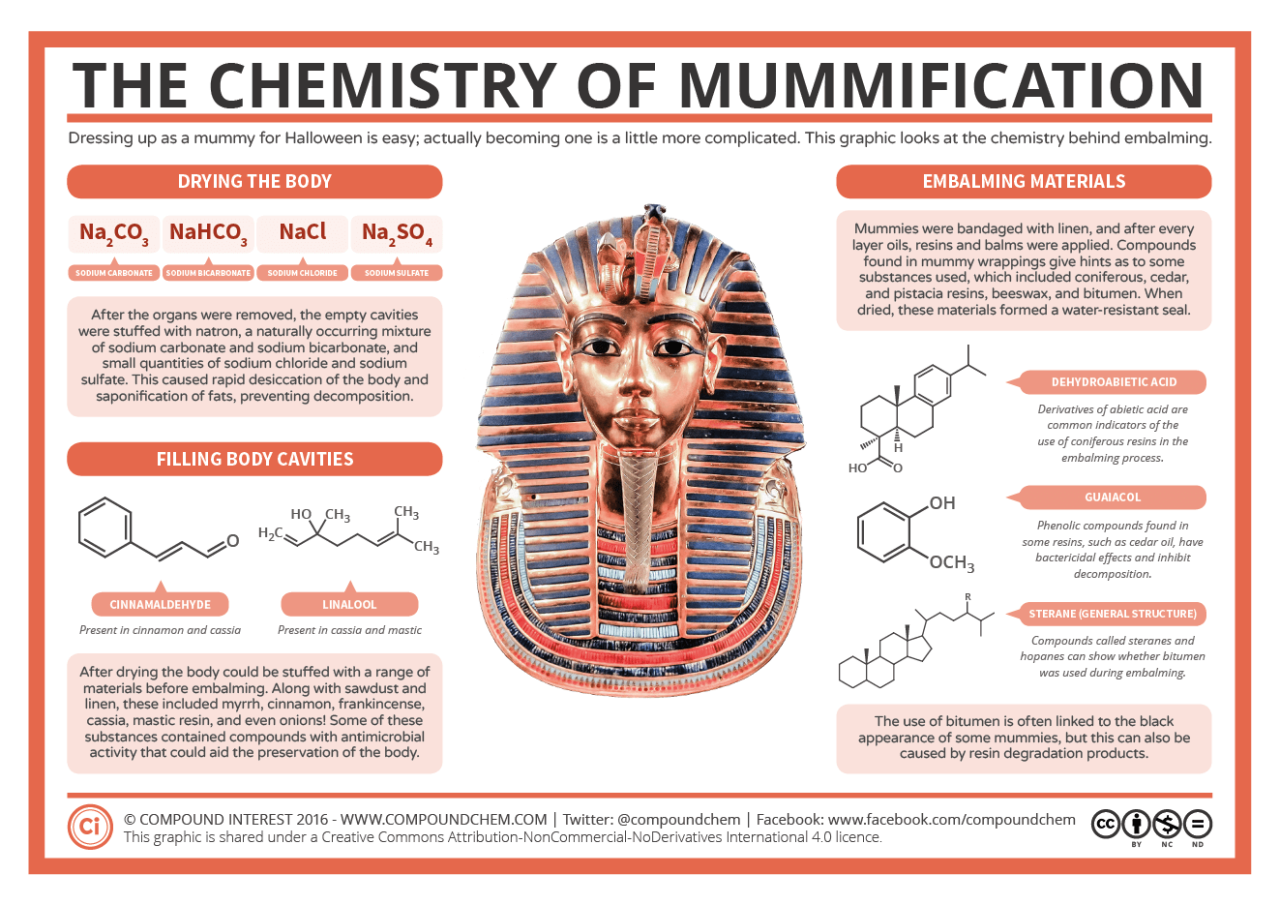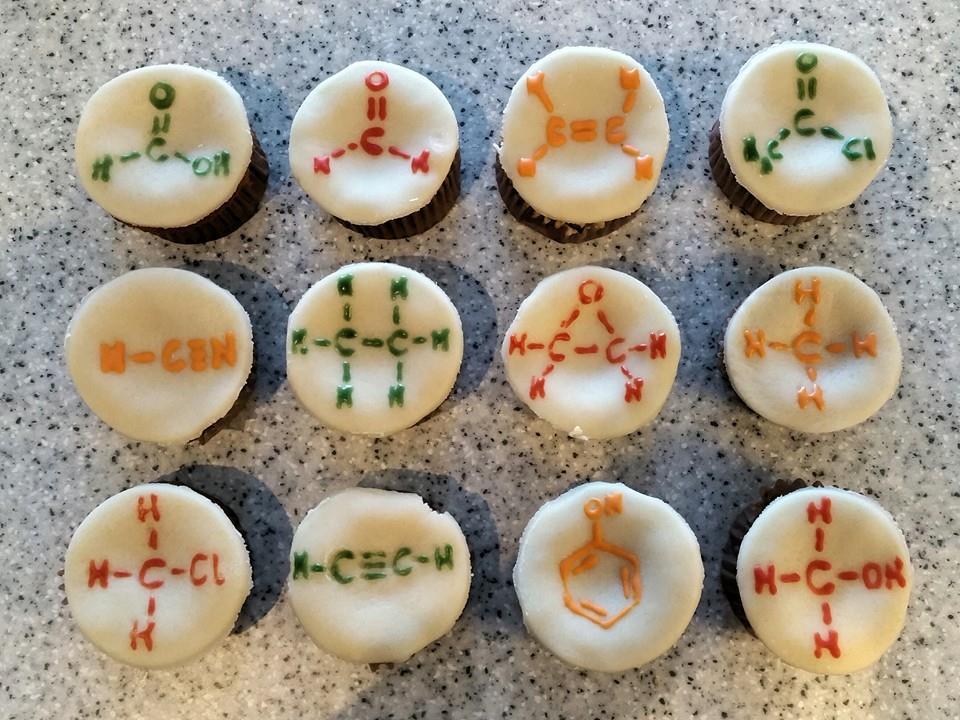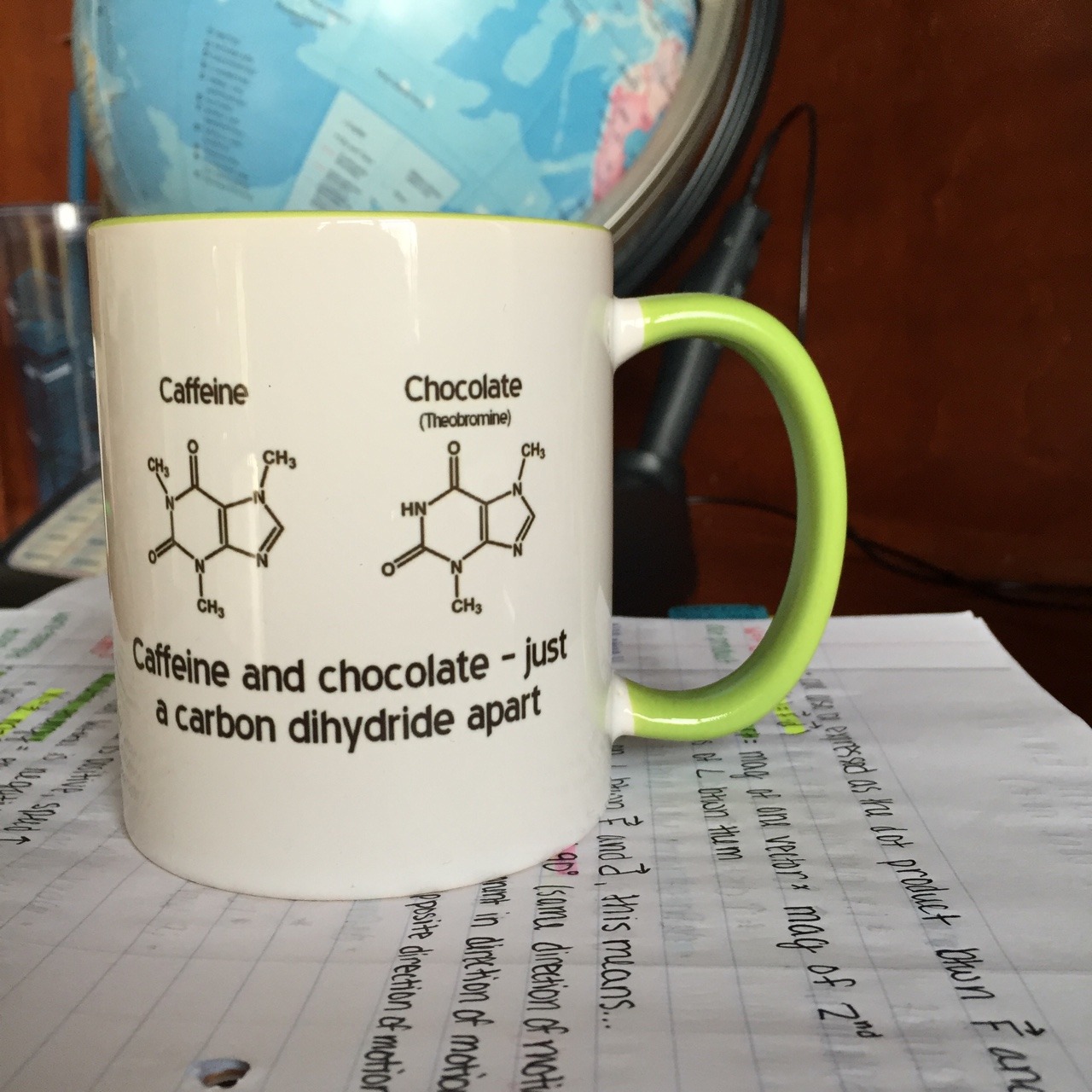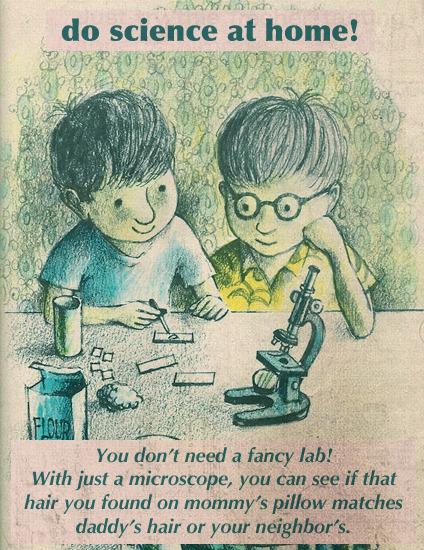Ninguna ciencia, en cuanto a ciencia, engaña; el engaño está en quien no sabe. (Miguel de Cervantes)
sábado, 26 de noviembre de 2016
viernes, 18 de noviembre de 2016
miércoles, 16 de noviembre de 2016
Nobel prize in physics 2016
The Royal Swedish Academy of Sciences has decided to award the Nobel Prize in Physics 2016 with one half to
David J. Thouless
University of Washington, Seattle, WA, USA
University of Washington, Seattle, WA, USA
and the other half to
F. Duncan M. Haldane
Princeton University, NJ, USA
Princeton University, NJ, USA
and
J. Michael Kosterlitz
Brown University, Providence, RI, USA
Brown University, Providence, RI, USA
”for theoretical discoveries of topological phase transitions and topological phases of matter”
They revealed the secrets of exotic matter
This year’s Laureates opened the door on an unknown world where matter can assume strange states. They have used advanced mathematical methods to study unusual phases, or states, of matter, such as superconductors, superfluids or thin magnetic films. Thanks to their pioneering work, the hunt is now on for new and exotic phases of matter. Many people are hopeful of future applications in both materials science and electronics.
The three Laureates’ use of topological concepts in physics was decisive for their discoveries. Topology is a branch of mathematics that describes properties that only change step-wise. Using topology as a tool, they were able to astound the experts. In the early 1970s, Michael Kosterlitz and David Thouless overturned the then current theory that superconductivity or suprafluidity could not occur in thin layers. They demonstrated that superconductivity could occur at low temperatures and also explained the mechanism, phase transition, that makes superconductivity disappear at higher temperatures.
In the 1980s, Thouless was able to explain a previous experiment with very thin electrically conducting layers in which conductance was precisely measured as integer steps. He showed that these integers were topological in their nature. At around the same time, Duncan Haldane discovered how topological concepts can be used to understand the properties of chains of small magnets found in some materials.
We now know of many topological phases, not only in thin layers and threads, but also in ordinary three-dimensional materials. Over the last decade, this area has boosted frontline research in condensed matter physics, not least because of the hope that topological materials could be used in new generations of electronics and superconductors, or in future quantum computers. Current research is revealing the secrets of matter in the exotic worlds discovered by this year’s Nobel Laureates.
Read more about this year's prize
To read the text you need Acrobat Reader.
All illustrations: Copyright © Johan Jarnestad/The Royal Swedish Academy of Sciences
David J. Thouless, born 1934 in Bearsden, UK. Ph.D. 1958 from Cornell University, Ithaca, NY, USA. Emeritus Professor at the University of Washington, Seattle, WA, USA.
https://sharepoint.washington.edu/phys/people/Pages/view-person.aspx?pid=85
https://sharepoint.washington.edu/phys/people/Pages/view-person.aspx?pid=85
F. Duncan M. Haldane, born 1951 in London, UK. Ph.D. 1978 from Cambridge University, UK. Eugene Higgins Professor of Physics at Princeton University, NJ, USA.
https://www.princeton.edu/physics/people/display_person.xml?netid=haldane&display=faculty
https://www.princeton.edu/physics/people/display_person.xml?netid=haldane&display=faculty
J. Michael Kosterlitz, born 1942 in Aberdeen, UK. Ph.D. 1969 from Oxford University, UK. Harrison E. Farnsworth Professor of Physics at Brown University, Providence, RI, USA.
https://vivo.brown.edu/display/jkosterl
https://vivo.brown.edu/display/jkosterl
Prize amount: 8 million Swedish krona, with one half to David Thouless and the other half to be shared between Duncan Haldane and Michael Kosterlitz.
Further information: http://kva.se and http://nobelprize.org
Press contact: Jessica Balksjö Nannini, Press Officer, phone +46 8 673 95 44, +46 70 673 96 50, jessica.balksjo@kva.se
Experts: Thors Hans Hansson, phone +46 8 553 787 37, hansson@fysik.su.se, and David Haviland, haviland@kth.se, members of the Nobel Committee for Physics.
Further information: http://kva.se and http://nobelprize.org
Press contact: Jessica Balksjö Nannini, Press Officer, phone +46 8 673 95 44, +46 70 673 96 50, jessica.balksjo@kva.se
Experts: Thors Hans Hansson, phone +46 8 553 787 37, hansson@fysik.su.se, and David Haviland, haviland@kth.se, members of the Nobel Committee for Physics.
lunes, 14 de noviembre de 2016
The nobel prize in physiology or medicine
This year's Nobel Laureate discovered and elucidated mechanisms underlying autophagy, a fundamental process for degrading and recycling cellular components.
The word autophagy originates from the Greek words auto-, meaning "self", and phagein, meaning "to eat". Thus,autophagy denotes "self eating". This concept emerged during the 1960's, when researchers first observed that the cell could destroy its own contents by enclosing it in membranes, forming sack-like vesicles that were transported to a recycling compartment, called the lysosome, for degradation. Difficulties in studying the phenomenon meant that little was known until, in a series of brilliant experiments in the early 1990's, Yoshinori Ohsumi used baker's yeast to identify genes essential for autophagy. He then went on to elucidate the underlying mechanisms for autophagy in yeast and showed that similar sophisticated machinery is used in our cells.
Ohsumi's discoveries led to a new paradigm in our understanding of how the cell recycles its content. His discoveries opened the path to understanding the fundamental importance of autophagy in many physiological processes, such as in the adaptation to starvation or response to infection. Mutations in autophagy genes can cause disease, and the autophagic process is involved in several conditions including cancer and neurological disease.
Degradation – a central function in all living cells
In the mid 1950's scientists observed a new specialized cellular compartment, called an organelle, containing enzymes that digest proteins, carbohydrates and lipids. This specialized compartment is referred to as a "lysosome" and functions as a workstation for degradation of cellular constituents. The Belgian scientist Christian de Duve was awarded the Nobel Prize in Physiology or Medicine in 1974 for the discovery of the lysosome. New observations during the 1960's showed that large amounts of cellular content, and even whole organelles, could sometimes be found inside lysosomes. The cell therefore appeared to have a strategy for delivering large cargo to the lysosome. Further biochemical and microscopic analysis revealed a new type of vesicle transporting cellular cargo to the lysosome for degradation (Figure 1). Christian de Duve, the scientist behind the discovery of the lysosome, coined the term autophagy, "self-eating", to describe this process. The new vesicles were named autophagosomes.

Figure 1: Our cells have different specialized compartments. Lysosomes constitute one such compartment and contain enzymes for digestion of cellular contents. A new type of vesicle called autophagosome was observed within the cell. As the autophagosome forms, it engulfs cellular contents, such as damaged proteins and organelles. Finally, it fuses with the lysosome, where the contents are degraded into smaller constituents. This process provides the cell with nutrients and building blocks for renewal.
During the 1970's and 1980's researchers focused on elucidating another system used to degrade proteins, namely the "proteasome". Within this research field Aaron Ciechanover, Avram Hershko and Irwin Rose were awarded the 2004 Nobel Prize in Chemistry for "the discovery of ubiquitin-mediated protein degradation". The proteasome efficiently degrades proteins one-by-one, but this mechanism did not explain how the cell got rid of larger protein complexes and worn-out organelles. Could the process of autophagy be the answer and, if so, what were the mechanisms?
A groundbreaking experiment
Yoshinori Ohsumi had been active in various research areas, but upon starting his own lab in 1988, he focused his efforts on protein degradation in the vacuole, an organelle that corresponds to the lysosome in human cells. Yeast cells are relatively easy to study and consequently they are often used as a model for human cells. They are particularly useful for the identification of genes that are important in complex cellular pathways. But Ohsumi faced a major challenge; yeast cells are small and their inner structures are not easily distinguished under the microscope and thus he was uncertain whether autophagy even existed in this organism. Ohsumi reasoned that if he could disrupt the degradation process in the vacuole while the process of autophagy was active, then autophagosomes should accumulate within the vacuole and become visible under the microscope. He therefore cultured mutated yeast lacking vacuolar degradation enzymes and simultaneously stimulated autophagy by starving the cells. The results were striking! Within hours, the vacuoles were filled with small vesicles that had not been degraded (Figure 2). The vesicles were autophagosomes and Ohsumi's experiment proved that authophagy exists in yeast cells. But even more importantly, he now had a method to identify and characterize key genes involved this process. This was a major break-through and Ohsumi published the results in 1992.

Figure 2: In yeast (left panel) a large compartment called the vacuole corresponds to the lysosome in mammalian cells. Ohsumi generated yeast lacking vacuolar degradation enzymes. When these yeast cells were starved, autophagosomes rapidly accumulated in the vacuole (middle panel). His experiment demonstrated that autophagy exists in yeast. As a next step, Ohsumi studied thousands of yeast mutants (right panel) and identified 15 genes that are essential for autophagy.
Autophagy genes are discovered
Ohsumi now took advantage of his engineered yeast strains in which autophagosomes accumulated during starvation. This accumulation should not occur if genes important for autophagy were inactivated. Ohsumi exposed the yeast cells to a chemical that randomly introduced mutations in many genes, and then he induced autophagy. His strategy worked! Within a year of his discovery of autophagy in yeast, Ohsumi had identified the first genes essential for autophagy. In his subsequent series of elegant studies, the proteins encoded by these genes were functionally characterized. The results showed that autophagy is controlled by a cascade of proteins and protein complexes, each regulating a distinct stage of autophagosome initiation and formation (Figure 3).

Figure 3: Ohsumi studied the function of the proteins encoded by key autophagy genes. He delineated how stress signals initiate autophagy and the mechanism by which proteins and protein complexes promote distinct stages of autophagosome formation.
Autophagy – an essential mechanism in our cells
After the identification of the machinery for autophagy in yeast, a key question remained. Was there a corresponding mechanism to control this process in other organisms? Soon it became clear that virtually identical mechanisms operate in our own cells. The research tools required to investigate the importance of autophagy in humans were now available.
Thanks to Ohsumi and others following in his footsteps, we now know that autophagy controls important physiological functions where cellular components need to be degraded and recycled. Autophagy can rapidly provide fuel for energy and building blocks for renewal of cellular components, and is therefore essential for the cellular response to starvation and other types of stress. After infection, autophagy can eliminate invading intracellular bacteria and viruses. Autophagy contributes to embryo development and cell differentiation. Cells also use autophagy to eliminate damaged proteins and organelles, a quality control mechanism that is critical for counteracting the negative consequences of aging.
Disrupted autophagy has been linked to Parkinson's disease, type 2 diabetes and other disorders that appear in the elderly. Mutations in autophagy genes can cause genetic disease. Disturbances in the autophagic machinery have also been linked to cancer. Intense research is now ongoing to develop drugs that can target autophagy in various diseases.
Autophagy has been known for over 50 years but its fundamental importance in physiology and medicine was only recognized after Yoshinori Ohsumi's paradigm-shifting research in the 1990's. For his discoveries, he is awarded this year's Nobel Prize in physiology or medicine.
Key publications
Takeshige, K., Baba, M., Tsuboi, S., Noda, T. and Ohsumi, Y. (1992). Autophagy in yeast demonstrated with proteinase-deficient mutants and conditions for its induction. Journal of Cell Biology 119, 301-311
Tsukada, M. and Ohsumi, Y. (1993). Isolation and characterization of autophagy-defective mutants of Saccharomyces cervisiae. FEBS Letters 333, 169-174
Mizushima, N., Noda, T., Yoshimori, T., Tanaka, Y., Ishii, T., George, M.D., Klionsky, D.J., Ohsumi, M. and Ohsumi, Y. (1998). A protein conjugation system essential for autophagy. Nature 395, 395-398
Ichimura, Y., Kirisako T., Takao, T., Satomi, Y., Shimonishi, Y., Ishihara, N., Mizushima, N., Tanida, I., Kominami, E., Ohsumi, M., Noda, T. and Ohsumi, Y. (2000). A ubiquitin-like system mediates protein lipidation. Nature, 408, 488-492
Yoshinori Ohsumi was born 1945 in Fukuoka, Japan. He received a Ph.D. from University of Tokyo in 1974. After spending three years at Rockefeller University, New York, USA, he returned to the University of Tokyo where he established his research group in 1988. He is since 2009
sábado, 12 de noviembre de 2016
jueves, 10 de noviembre de 2016
martes, 8 de noviembre de 2016
domingo, 6 de noviembre de 2016
sábado, 5 de noviembre de 2016
Gamificación, Diario de aprendizaje tercera semana.
Les
comparto el esbozo de mi narrativa
Título:
El trabajo de Superchero en el laboratorio de química
Descripción
de la temática de la narrativa:
1. Una habilidad propia encontrar productos especiales al combinar distintas sustancias de uso cotidiano
2Una tragedia personal no saber formar y obtener los objetos que deseamos, por eso necesitan de la ayuda del super héroe
3. Una motivación adecuada: espíritu emprendedor, trabajo en equipo
4. Un alter ego su compañero o compañeros secretos
Objetivos
de aprendizaje:
Describir
los pasos para obtener diferentes sustancias
Imaginar
cómo sería su vida si las obtienen o si no las obtienen
Fomentar el trabajo en equipo
Fomentar el trabajo en equipo
Tomar
conciencia de las normas del trabajo en el laboratorio
Las
consecuencias de no seguir o no seguir bien los procesos y las normas
Audiencia
a la que va dirigida y su
contexto:
Adolescentes
Emprendedores
Aventureros
Adolescentes
Emprendedores
Aventureros
Gente
con inquietudes
Alumnos
de 1º y 2º de la eso
Posibles
retos:
Falta
de organización
Dificultades
con los materiales especiales
Falta
de motivación, e interés
Dirección
de facebook
https://www.facebook.com/groups/gamificamooc/permalink/329030564132804/
Mi
storyboard
Mi inkelwriter
Había una vez un maravilloso niño que
quería hacer cosas sorprendentes, como..
transformarse en un
personaje de viaja por el espacio, no espera
quería ser una famosa tenista, no espera
quería se un niño, no....
continuara.....
viernes, 4 de noviembre de 2016
miércoles, 2 de noviembre de 2016
domingo, 30 de octubre de 2016
Nobel prize in chemistry 2016
The Royal Swedish Academy of Sciences has decided to award the Nobel Prize in Chemistry 2016 to
Jean-Pierre Sauvage
University of Strasbourg, France
University of Strasbourg, France
Sir J. Fraser Stoddart
Northwestern University, Evanston, IL, USA
Northwestern University, Evanston, IL, USA
and
Bernard L. Feringa
University of Groningen, the Netherlands
University of Groningen, the Netherlands
"for the design and synthesis of molecular machines"
They developed the world's smallest machines
A tiny lift, artificial muscles and minuscule motors. The Nobel Prize in Chemistry 2016 is awarded to Jean-Pierre Sauvage, Sir J. Fraser Stoddart and Bernard L. Feringa for their design and production of molecular machines. They have developed molecules with controllable movements, which can perform a task when energy is added.
The development of computing demonstrates how the miniaturisation of technology can lead to a revolution. The 2016 Nobel Laureates in Chemistry have miniaturised machines and taken chemistry to a new dimension.
The first step towards a molecular machine was taken by Jean-Pierre Sauvage in 1983, when he succeeded in linking two ring-shaped molecules together to form a chain, called a catenane. Normally, molecules are joined by strong covalent bonds in which the atoms share electrons, but in the chain they were instead linked by a freer mechanical bond. For a machine to be able to perform a task it must consist of parts that can move relative to each other. The two interlocked rings fulfilled exactly this requirement.
The second step was taken by Fraser Stoddart in 1991, when he developed a rotaxane. He threaded a molecular ring onto a thin molecular axle and demonstrated that the ring was able to move along the axle. Among his developments based on rotaxanes are a molecular lift, a molecular muscle and a molecule-based computer chip.
Bernard Feringa was the first person to develop a molecular motor; in 1999 he got a molecular rotor blade to spin continually in the same direction. Using molecular motors, he has rotated a glass cylinder that is 10,000 times bigger than the motor and also designed a nanocar.
2016's Nobel Laureates in Chemistry have taken molecular systems out of equilibrium's stalemate and into energy-filled states in which their movements can be controlled. In terms of development, the molecular motor is at the same stage as the electric motor was in the 1830s, when scientists displayed various spinning cranks and wheels, unaware that they would lead to washing machines, fans and food processors. Molecular machines will most likely be used in the development of things such as new materials, sensors and energy storage systems.
Read more about this year's prize
To read the text you need Acrobat Reader.
Image - Elastic molecular structure (pdf 828 kB)
Image - Molecular elevator (pdf 978 kB)
Image - Molecular chain (pdf 813 kb)
Image - Molecular motor (pdf 820 kb)
Image - Molecular shuttle (pdf 8902 kb)
Image - Molecular knots (pdf 820 kb)
Image - Nanocar (pdf 874 kb)
Image - Molecular elevator (pdf 978 kB)
Image - Molecular chain (pdf 813 kb)
Image - Molecular motor (pdf 820 kb)
Image - Molecular shuttle (pdf 8902 kb)
Image - Molecular knots (pdf 820 kb)
Image - Nanocar (pdf 874 kb)
All illustrations: Copyright © Johan Jarnestad/The Royal Swedish Academy of Sciences
Jean-Pierre Sauvage, born 1944 in Paris, France. Ph.D. 1971 from the University of Strasbourg, France. Professor Emeritus at the University of Strasbourg and Director of Research Emeritus at the National Center for Scientific Research (CNRS), France.
https://isis.unistra.fr/laboratory-of-inorganic-chemistry-jean-pierre-sauvage
https://isis.unistra.fr/laboratory-of-inorganic-chemistry-jean-pierre-sauvage
Sir J. Fraser Stoddart, born 1942 in Edinburgh, UK. Ph.D. 1966 from Edinburgh University, UK. Board of Trustees Professor of Chemistry at Northwestern University, Evanston, IL, USA.
http://stoddart.northwestern.edu
http://stoddart.northwestern.edu
Bernard L. Feringa, born 1951 in Barger-Compascuum, the Netherlands. Ph.D.1978 from the University of Groningen, the Netherlands. Professor in Organic Chemistry at the University of Groningen, the Netherlands.
www.benferinga.com
www.benferinga.com
Prize amount: 8 million Swedish krona, to be shared equally between the Laureates.
Further information: http://kva.se and http://nobelprize.org
Press contact: Jessica Balksjö Nannini, Press Officer, phone +46 8 673 95 44, +46 70 673 96 50, jessica.balksjo@kva.se
Expert: Olof Ramström, member of the Nobel Committee for Chemistry, phone +46 8 790 69 15, +46 70 433 42 60, ramstrom@kth.se
Further information: http://kva.se and http://nobelprize.org
Press contact: Jessica Balksjö Nannini, Press Officer, phone +46 8 673 95 44, +46 70 673 96 50, jessica.balksjo@kva.se
Expert: Olof Ramström, member of the Nobel Committee for Chemistry, phone +46 8 790 69 15, +46 70 433 42 60, ramstrom@kth.se
The Royal Swedish Academy of Sciences, founded in 1739, is an independent organisation whose overall objective is to promote the sciences and strengthen their influence in society. The Academy takes special responsibility for the natural sciences and mathematics, but endeavours to promote the exchange of ideas between various disciplines.
sábado, 29 de octubre de 2016
Gamificación. Diario de aprendizaje. Segunda semana.
Debilidades
- Equipamiento informático inadecuado
- Falta de instrumentos variados para todos los alumnos
Amenazas
- Criticas de los padres
Fortalezas
- Podemos decidir qué instrumentos utilizar
- No dependemos de las herramientas TIC para todo el proceso
Oportunidades.
- Los juegos están muy presentes en la sociedad
- Es un incentivo para la mejora del sistema
Gamificación. Diario de aprendizaje. Segunda semana.
Debilidades
- Equipamiento informático inadecuado
- Falta de instrumentos variados para todos los alumnos
Amenazas
- Criticas de los padres
Fortalezas
- Podemos decidir qué instrumentos utilizar
- No dependemos de las herramientas TIC para todo el proceso
Oportunidades.
- Los juegos están muy presentes en la sociedad
- Es un incentivo para la mejora del sistema
Gamificación. Diario de aprendizaje. Primera semana
La primera tarea consiste en hacer un diario del trabajo realizado, que será este blog de tumbrl:
que ya he usado para otros proyectos de formación similares donde todo lo relativo a este MOOC irá etiquetado con #gamificaMOOC.
También dentro de esta primera tarea está la de elaborar un AVATAR

He incluido un widget de twitter con el hashtag #gamificaMOOC.
Otra de las partes de esta primera tarea es la Curación de Contenidos sobre Gamificación. Yo he optado por un padlet donde ya tenia algunos recursos sobre gamificación
viernes, 28 de octubre de 2016
jueves, 27 de octubre de 2016
The Painted Bat (Kerivoula picta),
The Painted Bat (Kerivoula picta), as it is aptly named, is a small species of bat that grows to have a body length of 3 to 5.5 cm, tail length of 3 to 5.5 cm, and a wingspan of 18–30 cm. They’re tiny yet stunningly colored with bright orange or scarlet bodies, black wings and orange along the fingers.The reason for the unique coloration is due to the fact that these bats like to roost in vulnerable locations such as in the suspended nests of weaver finches and sunbirds or under the eaves of African huts. The bright colors act as a warning to other creatures that this is a “scary bat” and to leave it alone. (Source)
(vía sixpenceee)
miércoles, 26 de octubre de 2016
La selección de la ciencia en España 2016.
La revista QUO y el CSIC han presentado este martes a la Selección Española de la Ciencia 2016, un equipo formado por algunos de los investigadores más brillantes de nuestro país:
La Selección Española de Ciencia 2016 está formada por profesionales de prestigio internacional en diferentes áreas:
- Pedro Cavadas, cirujano plástico especialista en trasplantes
- Mariano Barbacid, bioquímico en el Centro Nacional de Investigaciones Oncológicas (CNIO)
- Susana Marcos, directora del Instituto de óptica ‘Daza de Valdés’ del CSIC
- Alberto Ruiz Jimeno, fundador del grupo altas energías del IFCA
- Laura M. Lechuga, profesora de investigación en el Instituto de Nanociencia y Nanotecnología catalán
- Francisco J. Martínez Mojica, investigador de la Universidad de Alicante y científico en el desarrollo de CRISPR
- José Manuel Galán, egiptólogo e impulsor del proyecto Djehuty
- Juan José Gómez Cadenas, investigador de IFIC y director del experimento Next
- Carmen Martínez, directora del Grupo de Viticultura en la Misión Biológica del CSIC en Galicia
- Mariano Esteban, Presidente de la Real Academia Nacional de Farmacia
- Mara Dierssen, investigadora del Centro de Regulación Genómica de Barcelona
- Miguel Delibes de Castro, investigador en la Estación Biológica de Doñana
A los que se suma como “último fichaje”Manel Esteller, director del programa de Epigenética y Biología del IDIBELL.
Esta selección española juega todos los días un partido contra el cáncer, el cambio climático, la escasez de recursos energéticos, la diabetes… Un partido para conocer mejor el mundo en el que vivimos, proteger la naturaleza que nos rodea, curar a nuestros hijos y a nuestros padres… El partido de la ciencia no tiene minuto final, y lo ganamos todos.
Los miembros del equipo de la Selección Española de la Ciencia 2016, recibirán su camiseta de manos de algunos de los mejores deportistas del país en una gala que se celebrará el próximo 4 de octubre en la sede del CSIC en Madrid y en la que se homenajeará a todos los científicos españoles.
Jorge Alcalde, director de la revista QUO explicó: “A pesar de todos los sinsabores que sufre la investigación española, los problemas de financiación, la fuga de cerebros, la crisis…, España juega en la Champions League de la ciencia desde hace tiempo. Sin embargo, los hombres y mujeres que hacen ciencia en España no suelen ocupar los grandes titulares. Nuestra intención es darles por un día, el foco que creemos que se merecen. Y lo hacemos uniendo sus nombres al deporte, en el que España es también un referente mundial”.
Y añade, “el deporte y ciencia comparten valores como el esfuerzo, el trabajo en equipo, la vocación… Nos parece que quizás, los científicos podrían aprender del mundo del deporte la capacidad de proyección de su trabajo y los deportistas apoyar con su popularidad la labor de estos investigadores. De ahí que hayamos puesto en marcha hace tres años esta iniciativa”.
Esta iniciativa cuenta a partir de este año también con el apoyo de Marca España que se ha sumado como colaborador al proyecto. España es un país de ciencia y de tecnología. Nuestro país es una referencia mundial en determinadas áreas de I+D+i así como en sectores como la investigación médica, las energías limpias,infraestructuras inteligentes,biotecnología y tecnologías para la salud, biología molecular, bioquímica, investigación…
Suscribirse a:
Entradas (Atom)















